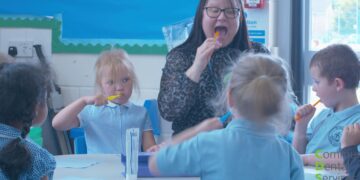By Sarah Browing
I believe that kindness is powerful because it connects us all as human beings. My belief in that power means that I see it in all sorts of settings.
One of those settings is within communities.
Dictionaries usually define a community as a group of people with something in common. This could be the place where they live, the characteristics they have or a hobby they take part in. These shared experiences or interests provide a starting point for connecting with other members of the group.
Kindness is about doing something to brighten someone else’s day. So it’s easy to see how something that connects us can be a good start for being kind. And I have found that I don’t need to look very far to see examples of community kindness.
Supporting neighbours
During the early stages of the covid pandemic, a WhatsApp group was set up to connect people on the road where I live. Volunteers collected prescriptions for the elderly. They delivered shopping to people without transport. They said hello to neighbours who were alone.
This approach to support in communities was replicated across our towns and boroughs, across the nation and across the world.
Help with hobbies
In shared interest groups, individuals show each other kindness too. A friend recently told me about the support she and her children get at their karate lessons, with more experienced students taking time to give them tips.
Busy parents help each other out by giving children lifts to football fixtures and swimming lessons. Friends host card games when the church hall venue falls through, squeezing extra chairs round the dining table so that no-one misses out.
And if you search on the internet for ‘how to crochet’, you will be inundated with video tutorials of people wanting to share their crafting skills.
Giving back
I’m sure you also know amazing, kind people who are volunteering their time and knowledge for their community. They are running community cafes, summer activities for children, food collection points, to name just a few. In my experience they often describe what they are doing as giving something back and they find that it makes them feel good too.
The future
With the increasing pressures of our post-pandemic ‘normality’ and the cost of living crisis, it is easy to worry that our sense of community will disappear again. But it seems to me that the evidence suggests otherwise.
People are still helping each other out. People are still collecting shopping for neighbours. People are still donating their skills, time and unwanted items.
The kindness of communities is still very much going on all around us. It has evolved, often because people are now fitting more activities into their lives again. But it is there.
Holding on to our shared connections as humans gives us kindness to see us through darker days as well as light.
Sarah Browning is a Kindness Cheerleader. Her website is: www.timeforkindness.co.uk
























